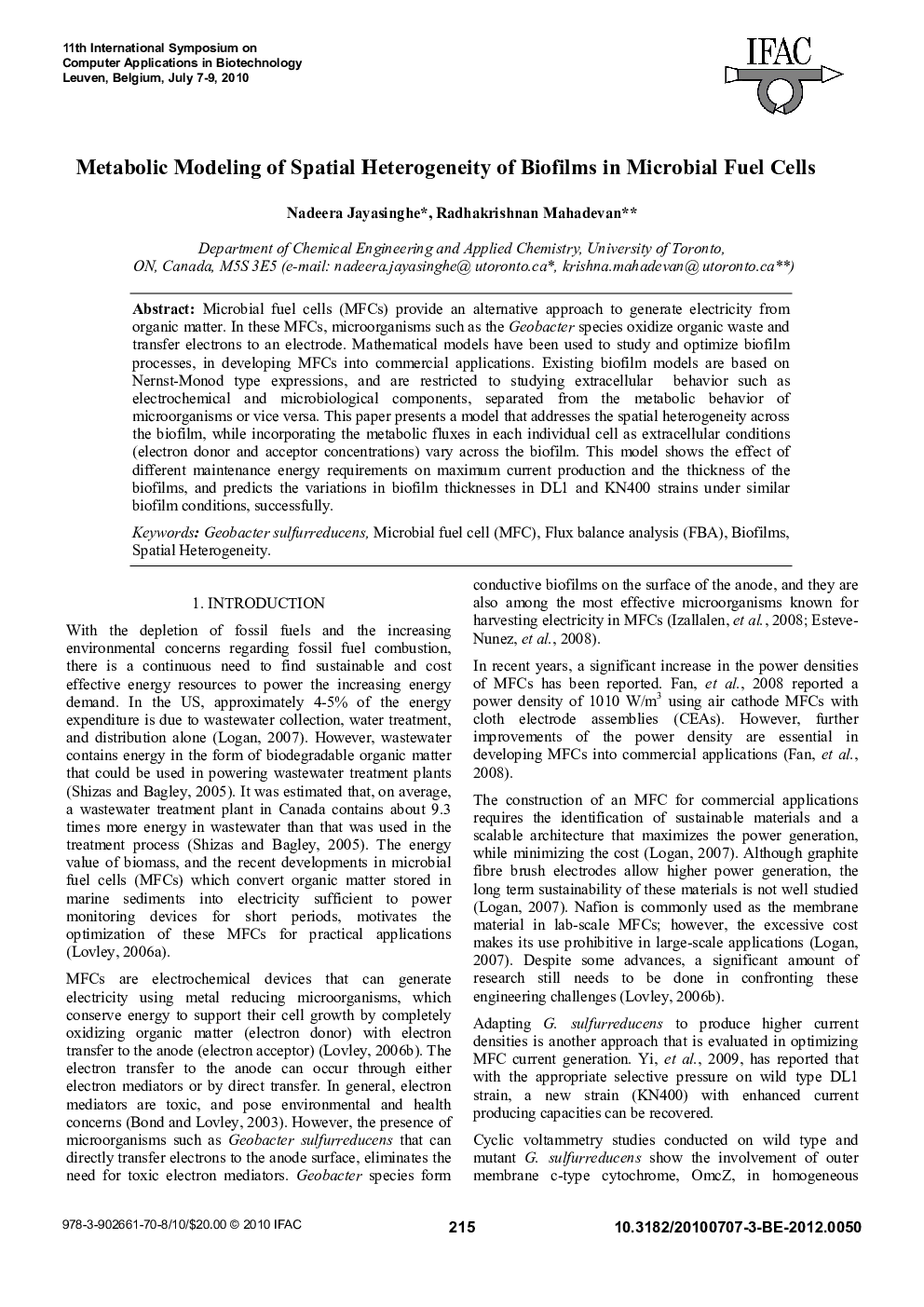| Article ID | Journal | Published Year | Pages | File Type |
|---|---|---|---|---|
| 720296 | IFAC Proceedings Volumes | 2010 | 6 Pages |
Microbial fuel cells (MFCs) provide an alternative approach to generate electricity from organic matter. In these MFCs, microorganisms such as the Geobacter species oxidize organic waste and transfer electrons to an electrode. Mathematical models have been used to study and optimize biofilm processes, in developing MFCs into commercial applications. Existing biofilm models are based on Nernst-Monod type expressions, and are restricted to studying extracellular behavior such as electrochemical and microbiological components, separated from the metabolic behavior of microorganisms or vice versa. This paper presents a model that addresses the spatial heterogeneity across the biofilm, while incorporating the metabolic fluxes in each individual cell as extracellular conditions (electron donor and acceptor concentrations) vary across the biofilm. This model shows the effect of different maintenance energy requirements on maximum current production and the thickness of the biofilms, and predicts the variations in biofilm thicknesses in DL1 and KN400 strains under similar biofilm conditions, successfully.
